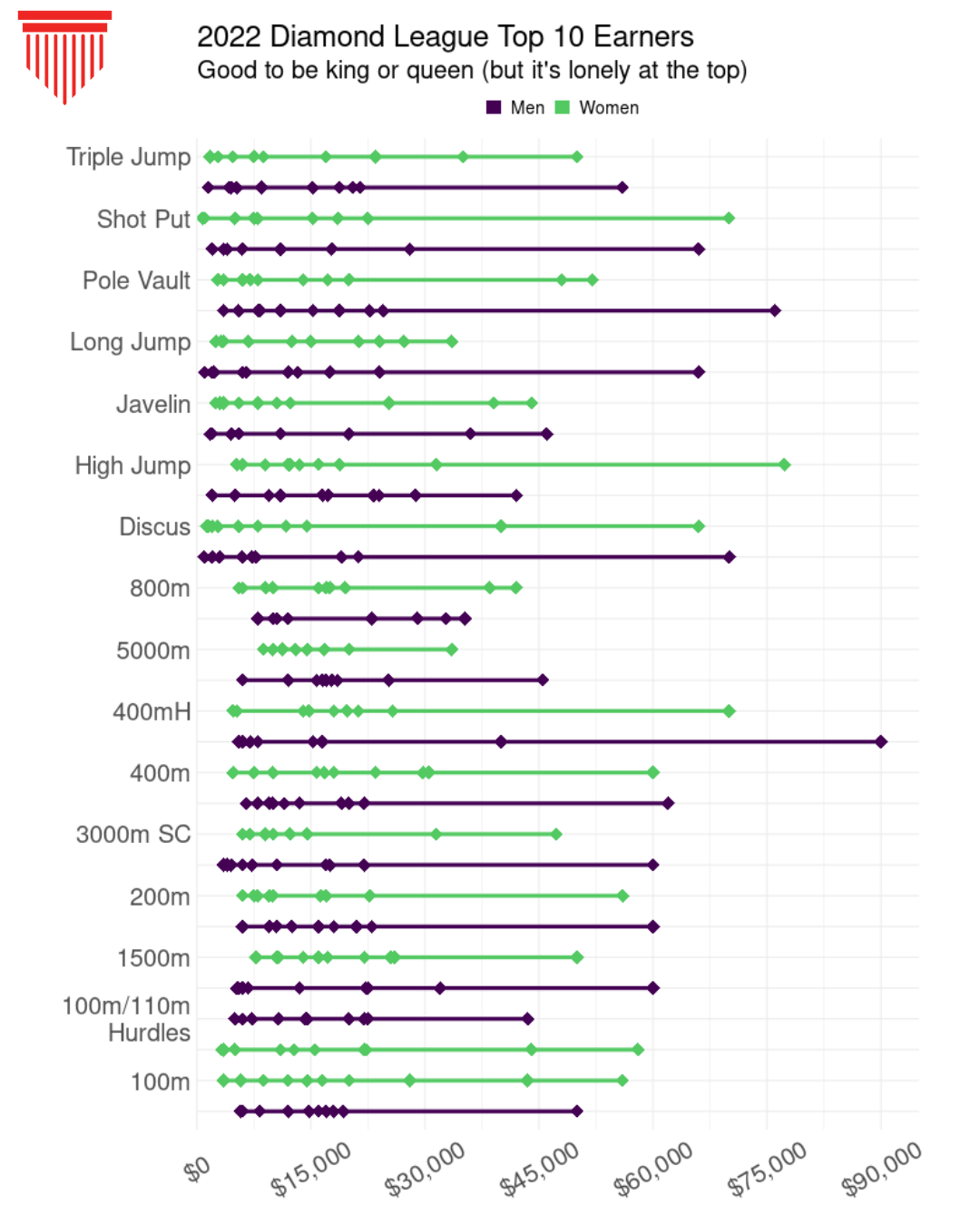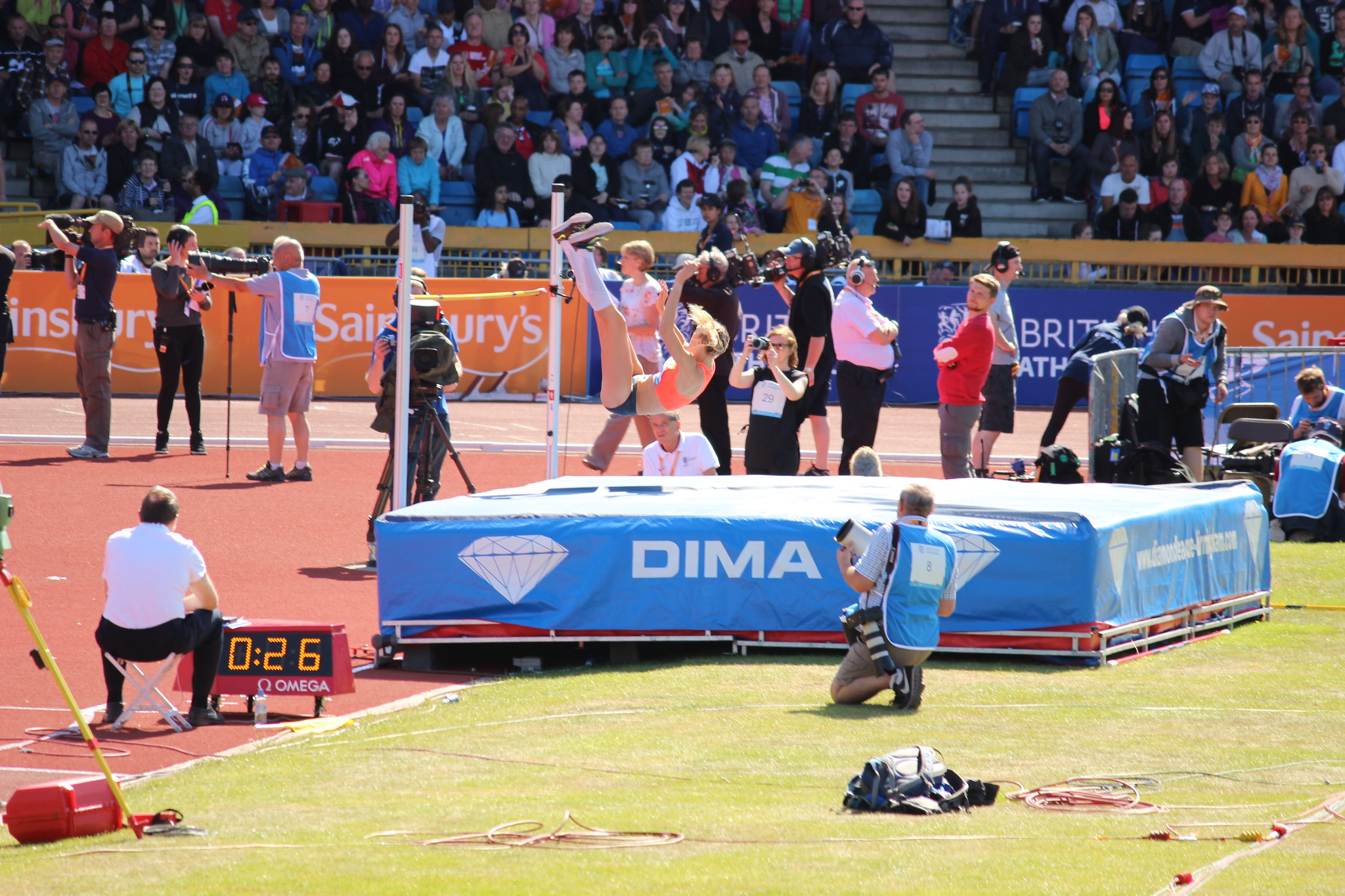We don’t particularly care about the Diamond League. But two we things we do care about are (a) making accessible and interesting what little financial information is available from the world of track & field, and (b) doing in track & field all the things that other (read: successful) sports do as a matter of course. We could throw on top a third thing: if we’re willing to do this for a part of the sport that we’re not interested in and gain nothing from, imagine what we’ll do for our athletes, teams and partners as they come on board.
To those ends, the 2022 Diamond League prize money earnings table. All columns are sortable, so click the column titles to arrange the data however you want; search for a few athletes; or just scroll and click through.
More data and analysis below the table.
<!DOCTYPE html>
Scanning through the first few pages of the table, you may notice that there aren’t many close 1-2 battles among the top earners in an event (i.e., event-gender combination, which we’ll just call “event” from now on), and those like women’s pole vault and both men’s and women’s 800m occur after the earnings have really dropped off their page 1 peaks. Sorting by the number of Diamond League events the athletes competed in, we see a pretty good spread of earnings, from Shericka Jackson and Alison Dos Santos with $90,000 or more down through Elena Vallortigara and Liemarvin Bonafacia with under $10,000.
These two observations suggest a wide spread of earnings both within and between events, an idea that’s supported by the chart below. Three events had their top earners pull in over $75,000, while 10 events had top earners under $50,000, three of which were under $40,000.

The within-group earnings spread goes away very quickly as you work your down the places. The difference between fifth place finishers in any two events is much less than the difference between first or second place finishers, and the difference between tenth place finishers even more so. The chart shows that visually, and running correlations to compare finishing places shows no real relationship between what the top earners make and what those down the event leaderboards make.
Diamond League earnings and athlete management: Play the market?
If you’re a track & field agent who likes to apply a bit of game theory to your operations (I know, I know, lolcatz, but humor me here), you could use this data to optimize your athletes’ competition schedules for prize money next year.
You could interpret the large gap between top earners and the rest in one of two ways. First, that athlete is going unchallenged at the top, so if you have athletes who could win a meet or two from that top earner you could take a share of those first place winnings and bring some parity to the top of the event’s earnings table. On the other hand, that lead at the top could indicate absolute domination in the event, where all the other athletes are essentially competing for second. In that case, entering more of your athletes into that event will only dilute the earnings share for the other competitors because none of them are threatening the world’s best.
Another business case you might make is in those events where the top earner isn’t running away a the big purse. One way of looking at that is similar to the second point above: it’s already crowded at the top of the event, so aggressively entering one or more of your athletes into those events will just shuffle around the money without any one athlete being in a position to make a big haul. On the other hand, if you have an athlete who is on the verge of a major breakthrough year, they may be able to wreck that parity at the top. Or, third, if all the athletes in a given event competed in a relatively small number of Diamond League meets, your athlete could potentially run the table just by consistently showing up.
MO’ MONEY: Track & field athlete salaries likely in line with other non-major sports
Of course, that whole thought process is based only on prize money, which is only one of the ways athletes make money at the Diamond League.
Presumably, many of the athletes who were at the top of the earnings table, particularly those in marquee events, made more money from appearance fees than from winning. But, of course, we’re not allowed to know what the Diamond League pays out in appearance fees, presumably for the same reasons we’re not allowed to know (or, if some athletes have their way, speculate on) what the athletes make from sponsorships. Those reasons being, well, because reasons. Also because shut up, they said, as enforced via legally binding contracts.
RELATED: Contract speculation drives two things T&F doesn’t have: Revenue and transparency
So, as always, we do what we can with what we have. If you have something that you’d like to share with us about athlete earnings, please let us know and we can figure out a safe, secure and anonymous way of doing it (to whatever extent you care about such things).
And, as always, if you’re interested in seeing what we can and will do for the athletes and properties we do actually care about – unlike the Diamond League, which we just did all this for – drop us a line today and let’s get started.
Photo credit: Peter Lowe / Flickr, under CC BY-ND 2.0.

